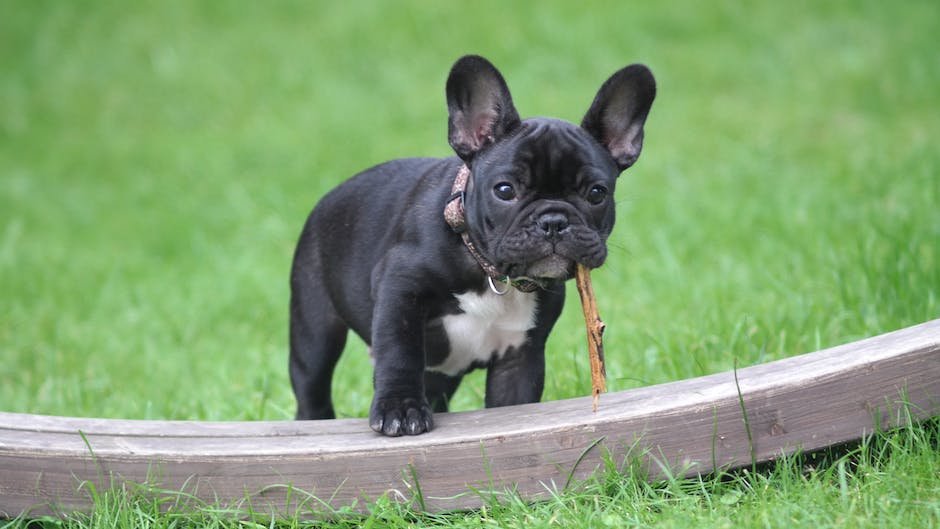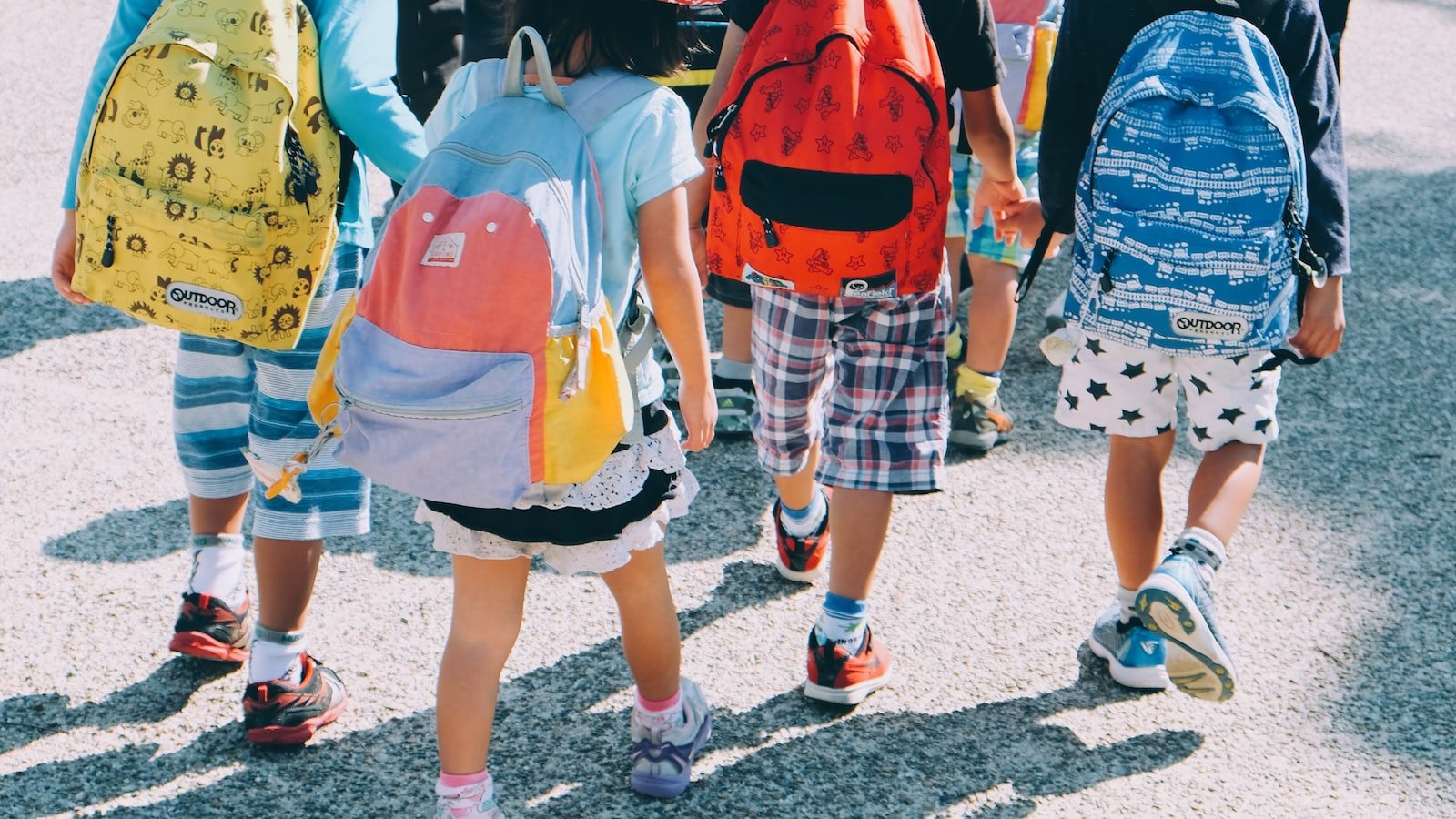Playful interactions with your furry companion are a source of endless joy, where laughter and wagging tails become the soundtrack of your shared moments. But amidst the thrill, the lines of playfulness might blur, leaving you with an unexpected nip or aching teeth marks. Fret not, for understanding why dogs tend to bite during play can unlock the secret to a harmonious, bite-free bond. So, whether playtime feels like a disheartening obstacle course or if you simply seek to pave the path for a more gentle exchange, this guide will equip you with invaluable techniques to curtail those playful nips and promote a safer, more enjoyable playtime for both you and your furry friend.
Table of Contents
- Creating a Safe and Healthy Environment for Playtime
- Understanding the Reason Behind Your Dog’s Biting Behavior
- Teaching Proper Play Etiquette: Setting Boundaries and Rules
- Implementing Effective Training Techniques to Prevent Biting
- Encouraging Positive Behavior through Reward-Based Exercises
- Q&A
- The Conclusion

Creating a Safe and Healthy Environment for Playtime
When it comes to playtime, ensuring a safe and healthy environment for children is crucial. By taking a few simple steps, parents and caregivers can create an atmosphere that encourages fun and exploration while minimizing potential risks. Here are some tips to consider:
- Clear the clutter: Remove any objects that may cause accidents or injuries. Keep the play area organized and free from unnecessary items.
- Provide appropriate supervision: Always keep an eye on children during playtime to prevent any accidents or conflicts. Offering gentle guidance and setting clear boundaries can help create a safe and structured environment.
- Promote cleanliness: Regularly clean and sanitize the play area to prevent the spread of germs and infections. Encourage children to wash their hands before and after playtime to maintain good hygiene.
is a priority for every caregiver. By implementing these steps, parents can ensure that their little ones are free to play, explore, and learn in a secure and nurturing space.

Understanding the Reason Behind Your Dog’s Biting Behavior
Common Triggers for Dog Biting:
- Protection: Dogs may bite if they feel the need to protect themselves, their territory, or their humans. This behavior is instinctual and can be triggered by perceived threats.
- Pain or Discomfort: Just like humans, dogs can become irritable when they are in pain or experiencing discomfort. Biting may be their way of communicating their distress.
- Fear or Anxiety: Dogs that are fearful or anxious may resort to biting as a defense mechanism. This can happen in response to unfamiliar situations, loud noises, or traumatic experiences.
- Resource Guarding: Some dogs bite when they are possessive of their food, toys, or other valuable belongings. This behavior stems from a fear of losing their valued possessions.
Signs of Aggression to Watch Out For:
- Growling: A low, guttural growl is a clear sign that your dog is feeling threatened or agitated.
- Bared Teeth: When a dog exposes its teeth, it is a warning sign that it may resort to biting if the situation escalates.
- Stiff Body Language: If your dog’s body becomes rigid and tense, it is an indication that it is on high alert and ready to defend itself if necessary.
How to Address Biting Behavior:
Understanding the underlying cause of your dog’s biting behavior is crucial in finding an appropriate solution. Here are a few tips to help address and manage biting tendencies in dogs:
- Consult a Professional: Seek guidance from a certified dog trainer or animal behaviorist who can provide expert advice based on your dog’s specific situation.
- Socialization: Properly socializing your dog from an early age can help them become more confident and less likely to resort to biting in stressful situations.
- Positive Reinforcement: Reward your dog’s good behavior with treats, praise, and affection to encourage them to adopt more desirable behaviors.
- Redirect and Distract: If you notice your dog becoming aggressive or showing signs of biting, divert their attention to a toy or engage them in an activity that they enjoy.
Remember, patience and consistency are key when addressing your dog’s biting behavior. With the right approach and understanding, you can help your furry friend overcome their biting tendencies and create a safer and happier environment for everyone involved.

Teaching Proper Play Etiquette: Setting Boundaries and Rules
One of the essential aspects of fostering healthy and respectful relationships among children is teaching them proper play etiquette. Setting clear boundaries and establishing rules not only ensures a safe and enjoyable play environment but also encourages cooperation, empathy, and consideration for others. By instilling these values, we empower children with the tools to navigate social interactions and build lasting friendships.
To effectively teach proper play etiquette, it’s important to communicate expectations in a way that children can understand and engage with. Here are some key strategies and tips to help guide you:
1. Lead by example: Children are incredibly perceptive, so practicing good play etiquette yourself will greatly influence their behavior. Demonstrate kindness, respect, and inclusivity when engaging in activities with them.
2. Establish clear boundaries: Clearly define the limits of acceptable behavior, both physical and verbal, to ensure everyone’s safety and comfort. Reinforce the importance of gentle touching, using kind words, and respecting personal space.
3. Collaborate with children: Involve children in the process of setting rules and boundaries. This empowers them and instills a sense of ownership, making them more likely to follow through. Encourage them to share their ideas and concerns, fostering a sense of collective responsibility.
4. Reinforce positive behavior: Acknowledge and praise children when they exhibit good play etiquette. Positive reinforcement goes a long way in encouraging them to continue making kind choices and demonstrating empathy.
Remember, teaching proper play etiquette is an ongoing process, and consistency is key. By providing a nurturing and structured environment, we can promote healthy interactions, build strong foundations for relationships, and ultimately cultivate a culture of respect and empathy both on and off the playground.
Implementing Effective Training Techniques to Prevent Biting
Biting is a common behavioral issue in both adults and children, but with the right training techniques, it can be effectively prevented. Here are a few strategies that can help address and curb biting habits:
- Consistent Communication: Clear and consistent communication is key when training to prevent biting. Whether it’s teaching a child or addressing an adult, using simple and concise words helps them understand that biting is not acceptable. Ensure your words are firm yet gentle, emphasizing the importance of empathy and respect.
- Positive Reinforcement: Encouraging desirable behavior is essential in preventing biting. Praise and rewards, such as a verbal “good job” or a small treat, can reinforce positive actions and create a strong association between not biting and positive outcomes. Always highlight the benefits of using alternative methods to express frustration or need.
- Redirecting Attention: Often, biting occurs due to frustration or a need for sensory input. By redirecting attention to appropriate alternatives, such as chewing toys or engaging in calming activities, the urge to bite can be effectively channeled. Providing a variety of toys and offering suitable distractions can help reduce biting tendencies.
By implementing these effective training techniques, individuals can learn alternative ways to express their emotions and needs, fostering a safer and more harmonious environment for everyone involved. Remember that consistent practice, patience, and understanding are crucial in promoting long-term behavior change and preventing biting incidents.
Encouraging Positive Behavior through Reward-Based Exercises
One effective way to encourage positive behavior in individuals is through the implementation of reward-based exercises. By incorporating rewards into daily routines and activities, individuals are motivated to exhibit positive behavior, as they associate their actions with positive outcomes. Rewards can come in various forms, such as verbal praise, small tokens, or even privileges.
To effectively implement reward-based exercises, it is important to establish clear expectations and goals. Clearly communicate to the individuals what behavior is desired and explain the rewards that can be earned through their efforts. This not only provides individuals with a sense of purpose but also empowers them to actively participate in their own behavior development.
Moreover, utilizing a system of positive reinforcement is crucial to reinforce the desired behavior. For instance, a simple sticker chart can be used, where individuals receive a sticker each time they exhibit the positive behavior. Once a certain number of stickers are earned, they can exchange them for a reward of their choice. This creates a sense of achievement and further motivates individuals to continue demonstrating positive behavior.
In addition, it is important to note that rewards should be consistent, meaningful, and personalized. Tailoring rewards to individuals’ interests and preferences enhances their sense of gratification and makes the reward more enticing. Regularly evaluate and adjust the reward system based on individuals’ progress, ensuring it remains challenging yet attainable.
By integrating reward-based exercises into daily routines, individuals are encouraged to consistently display positive behavior, ultimately leading to personal growth and development. Such exercises foster a positive and supportive environment, where individuals feel valued and motivated to make positive choices.
Q&A
Q: Why does my dog bite during play?
A: Dogs may bite during play due to excitement, lack of proper training, or an instinctual behavior. It’s important to understand the underlying reason for the biting in order to effectively address the issue.
Q: Are there any warning signs that my dog is about to bite?
A: Yes, some common warning signs include growling, snarling, raised hackles, stiff body posture, and a fixed stare. These signs indicate that your dog is becoming uncomfortable or agitated, and biting may follow if the situation escalates.
Q: How can I prevent my dog from biting during play?
A: Ensuring your dog receives proper socialization, obedience training, and regular exercise can help reduce biting tendencies. Additionally, using positive reinforcement techniques to reward desirable behavior during playtime can encourage your dog to engage in non-aggressive play.
Q: What should I do if my dog bites during play?
A: If your dog bites during play, immediately stop the play session and walk away. Show your disapproval by ignoring the dog for a short period of time. This helps them associate the biting with the end of fun, discouraging the behavior in the future.
Q: Is it important to teach bite inhibition to my dog?
A: Absolutely! Bite inhibition is crucial for all dogs. By teaching your dog to control the force of their bite during play as puppies, they learn to be more aware of their jaws’ strength and better adapt their behavior during later stages of play.
Q: How can I teach my dog bite inhibition?
A: You can teach bite inhibition by using redirecting techniques when your puppy bites too hard. Gently remove your hand and replace it with a chew toy or a treat. This helps your dog associate biting too hard with the loss of attention and playtime.
Q: Should I allow my dog to mouth or nip during play?
A: While it’s natural for dogs to use their mouths during play, it’s important to discourage mouthing or nipping. If your dog starts doing this, redirect them to appropriate toys or soft objects to bite on instead.
Q: Can professional training help stop my dog from biting during play?
A: Yes, professional training from a certified dog trainer can be highly beneficial in addressing biting issues during play. A trainer can analyze your dog’s behavior and provide guidance on the most effective training techniques to modify their play behavior.
Q: Are there any breeds more prone to biting during play?
A: While any breed can exhibit biting tendencies during play, some breeds may have a higher predisposition due to their temperament or genetic makeup. However, with proper training and socialization, these tendencies can be managed effectively.
The Conclusion
As we bid farewell to this comprehensive guide on curbing those playful bites, we hope you have gained valuable insights into the art of transforming your furry companion’s rambunctiousness into a harmonious playtime. Remember, dear readers, that the path to a bite-free play zone requires patience, practice, and a deep understanding of your dog’s needs.
As you embark on this journey, armed with newfound knowledge, don’t be disheartened by the occasional nip or playful nibble. Instead, embrace each interaction as an opportunity to reinforce positive behaviors and nurture the unbreakable bond between you and your four-legged friend.
Let us not forget the incredible transformations that lie ahead—when gentle corrections replace sharp bites, and laugher reverberates through each playful encounter. With diligent guidance and consistent training, both you and your furry companion will embark on a whimsical adventure where joyful romps and gentle embraces take center stage.
So, go forth, dear readers, with new enthusiasm and optimism. May your friendship with your beloved canine reach new heights as you embark on an incredible journey of playful bliss. Trust in the process, never underestimate the power of love, and remember, endless tail wags and blissful playdates await you.
Until we meet again, under the boundless sky where laughter melds with wagging tails, be the guide your dog needs, the patient instructor of their playful ways. Farewell, and happy bonding!
As an affiliate, my content may feature links to products I personally use and recommend. By taking action, like subscribing or making a purchase, you’ll be supporting my work and fueling my taco cravings at the same time. Win-win, right?
Want to read more? Check out our Affiliate Disclosure page.